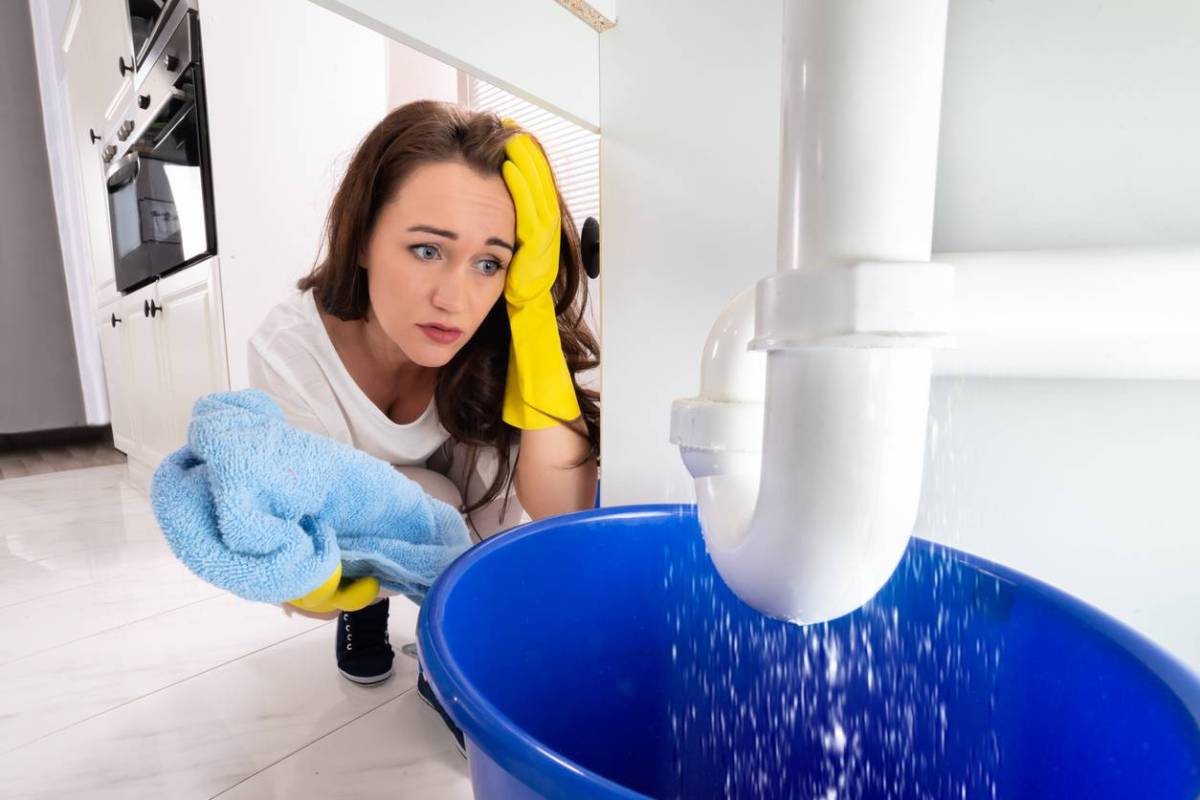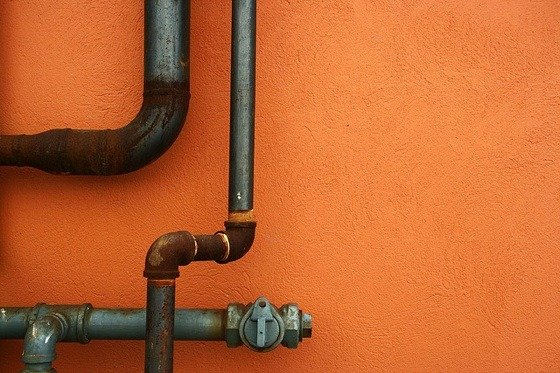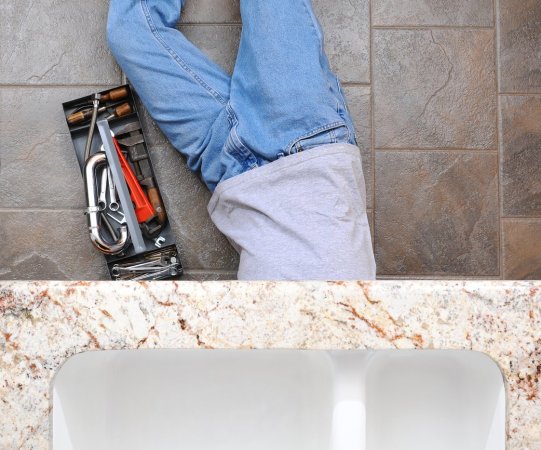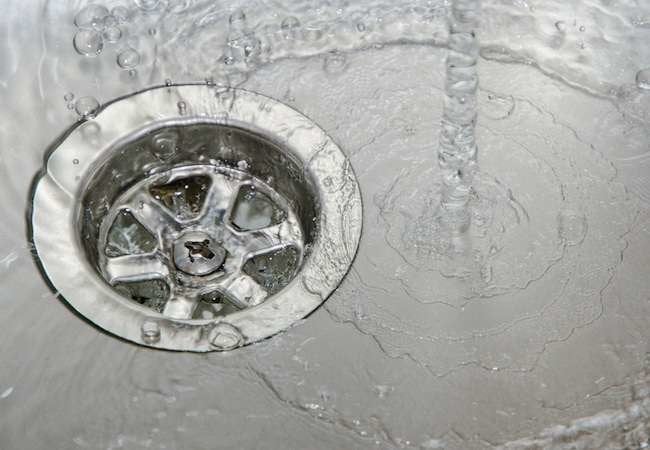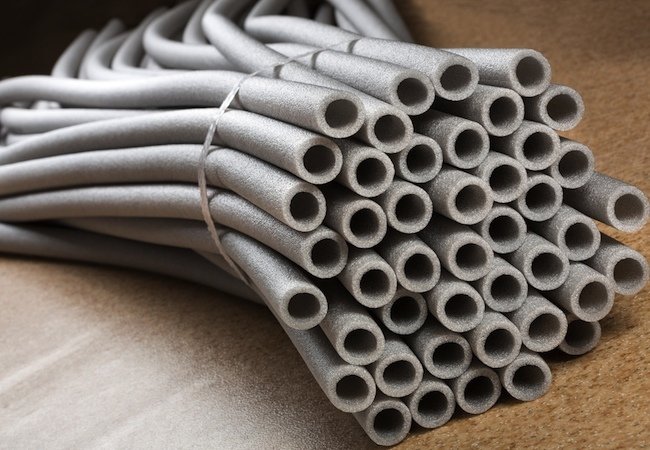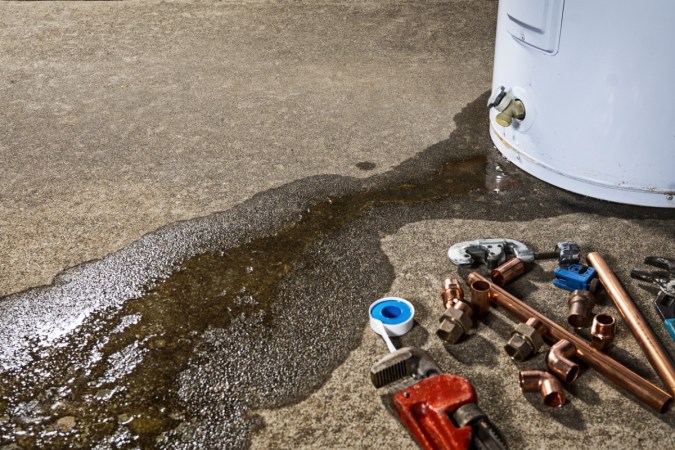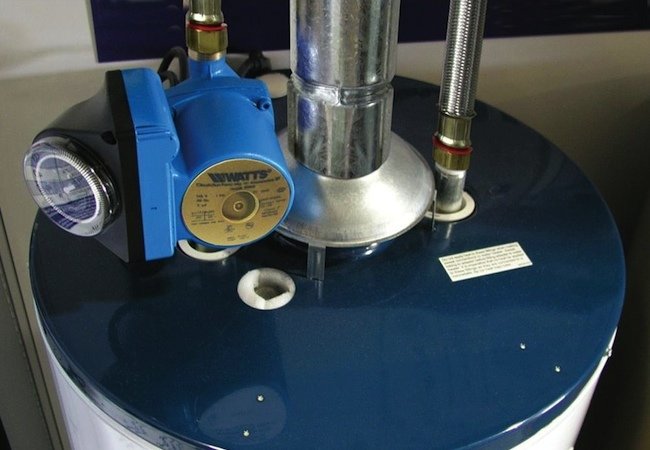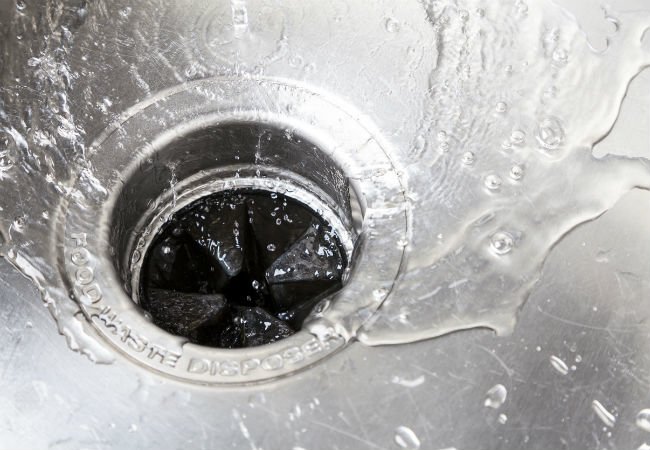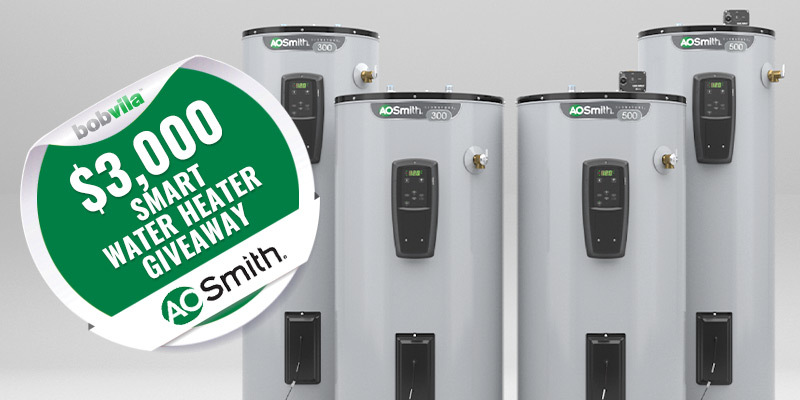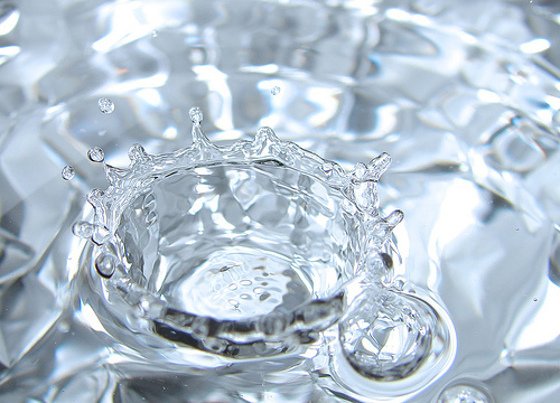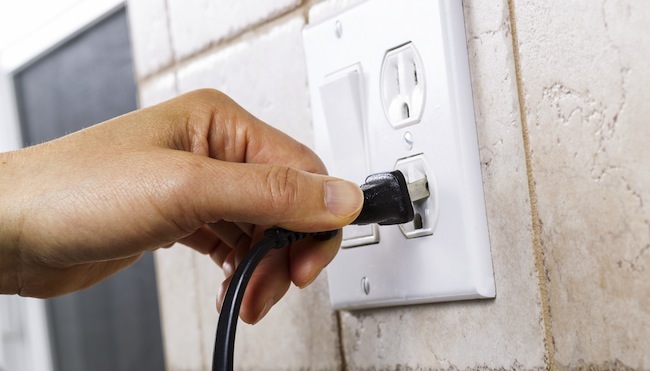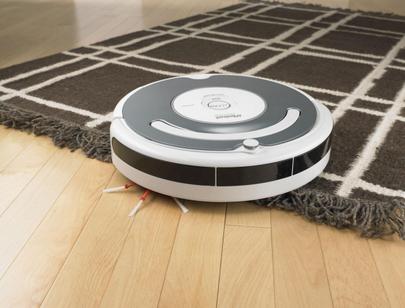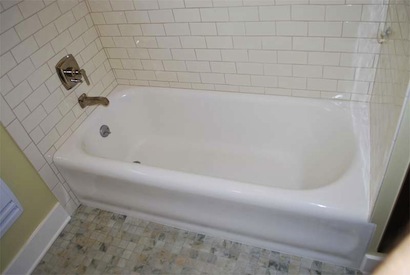We may earn revenue from the products available on this page and participate in affiliate programs. Learn More ›
“Don’t go looking for trouble” is an adage most homeowners can relate to, particularly when it comes to plumbing. After all, if there was a problem you’d know about it—or would you? The truth is, few things are as sneaky as leaky pipes and appliances, and by the time the situation becomes obvious, damage has already been done to various parts of your home. Bottom line, 40 percent of homeowners will deal with water damage at some point, which is five times more likely to occur than burglary and six times more apt to happen than fire, according to insurance statistics.
RELATED: 15 Places Water Damage May Be Hiding in Your Home
Fortunately, there are ways to detect water leaks and drips, shutting them down before they cause repair hassles and bills. Continue reading to learn how to keep a little leak from costing you major money!
3 Ways Water Loss Wallops Your Wallet
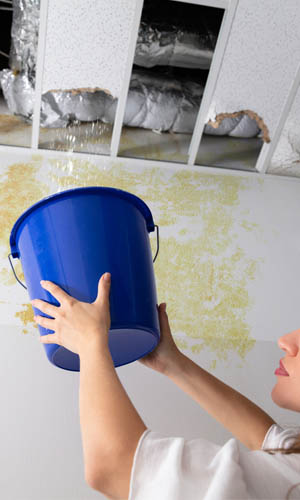
Undetected leaks—from the likes of plumbing, pipes, and appliances (typically washing machines, refrigerators, and dishwashers)—are responsible for 17 gallons of water loss every single day in the average home. Here’s how that can hurt financially:
- Bigger water bills: It may be easy to ignore that dripping shower head or kitchen faucet, until you realize it squanders about 347 gallons of water per year—and is guaranteed to blow up the water bill. And a constantly running toilet wastes eight gallons of water an hour—to the tune of some $70 a month. (Use this tool from the US Geological Survey tool to calculate how much water you’re wasting right now!)
- Dollars for water damage: Slow, sneaky leaks lead to gradual water damage that can ruin a paint job, drywall, ceilings, floors, cabinetry, and even impact HVAC ducts and electrical wiring. Yet unlike sudden accidents, long-standing issues that cause water damage generally aren’t covered by homeowner’s insurance—which means you’ll foot the bill to repair or replace. And of course items of sentimental value, such as photo albums or your grandmother’s wedding gown, are irreplaceable.
- Money for mold remediation: Most homeowners know that a flood can give rise to mold, a smelly, nasty fungus that ruins surfaces and potentially presents a health hazard. But few realize that an undetected leak is also likely to create the humid conditions that allow mold to thrive. Getting rid of mold in a small area can be a DIY chore, but more serious problems generally require hiring a mold removal professional at between $1,113 and $3,350, according to Home Advisor.
3 Systems that Outsmart Sneaky Leaks
While you may hear a hissing toilet or see a faucet drip, many problematic leaks commonly occur in areas you wouldn’t normally notice—under a sink, say, or behind a washing machine. This made keeping track of water loss a losing battle—until now, thanks to new smart technology that identifies and alerts you to leaks before they can wreak havoc in your home. With several systems currently on the market, you can choose the one that suits your climate (a key factor in some sudden leaks) and, of course, your budget. Here’s a look at three options that serve as a lookout for leaks.
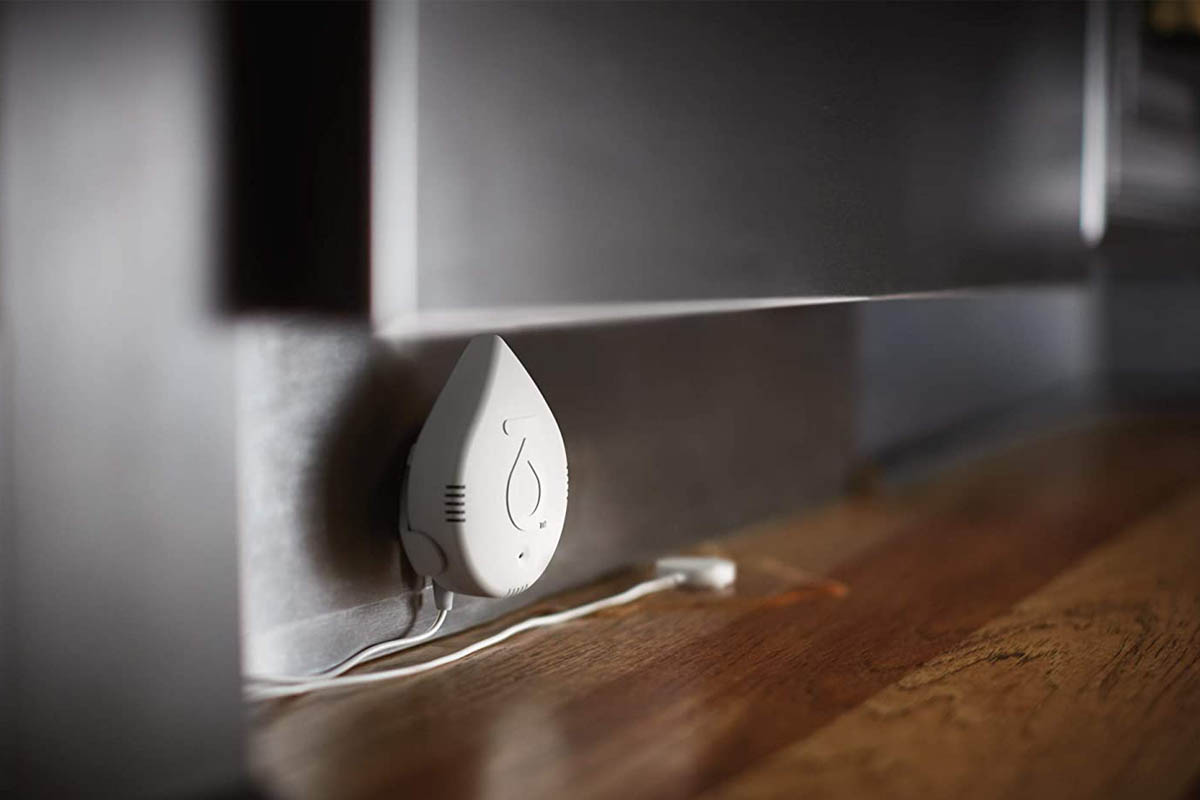
Flo by Moen
At the forefront of this technology, the Flo by Moen Smart Home Leak Detection System is a customizable system that learns your family’s typical water use habits and scans daily for unusual activity. If anything is amiss, the system pinpoints the problem is, sends you an alert, and lets you shut off the water before a leak wreaks havoc.
The key components are the Flo Smart Water Shutoff valve (available on Amazon), which connects to your home’s main water supply line, and the Smart Water Detector (also available on Amazon), which can be placed anywhere in the house. The two work in tandem to proactively monitor the security of your entire water system (including behind walls and in the foundation). Flo will not only find potentially catastrophic problems, it’s precise enough to locate pinhole-sized leaks that may release as little as a drop per minute.
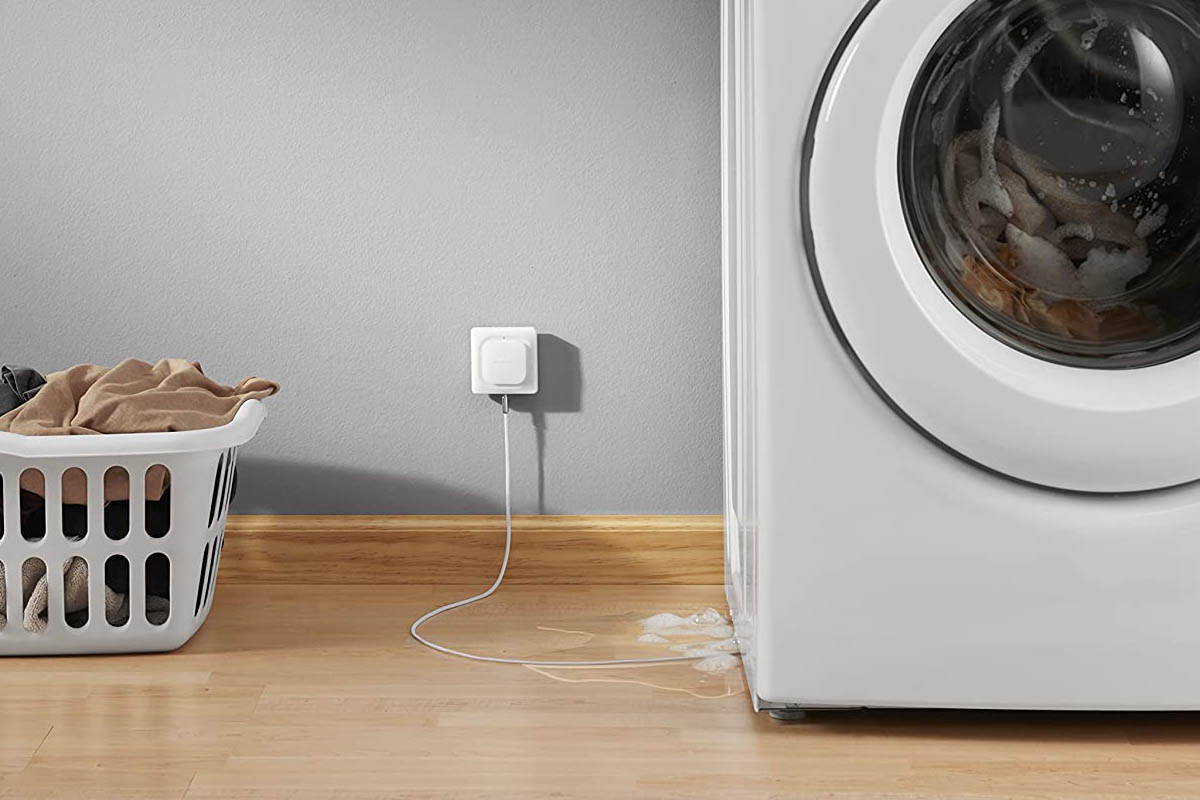
Honeywell Lyric Water Leak and Freeze Detector (Available on Amazon)
Honeywell’s entry into leak detection is a Wi-Fi connected device that not only IDs leaks but senses temperature and humidity, too. Temperature sensing can be crucial in cold climates, where pipes are apt to freeze (a likely cause of devastating leaks) while humidity detection can help homeowners ward off mold and mildew issues.
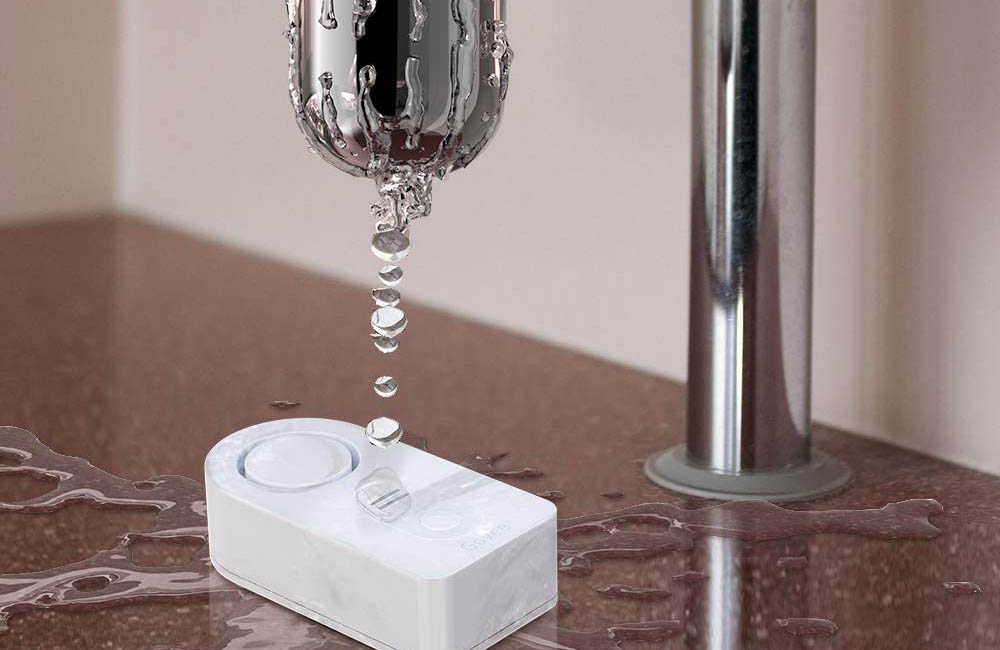
Govee WiFi Water Sensor (Available on Amazon)
If being alerted to leaks is your singular concern, this smart but simple option may fill the bill. Its water sensor and gateway connection work together via Wi-Fi to detect water leaks and send alerts through a smartphone app. The gateway is also expandable and can connect to up to 10 sensors.
Whichever option you choose, leak detection technology is a smart way to avoid common plumbing problems and keep your home watertight!
